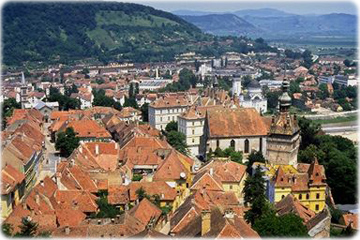
Romania
The territory that is now Romania first appeared in history as Dacia. Most of its inhabitants were originally from the region of Thrace, in Greece. Between AD 101 and 106 Dacia was conquered by Roman emperor Trajan and incorporated into the Roman Empire as a province. Roman colonists were sent into Dacia, and Rome developed the region considerably. The Romans built roads, bridges, and a great wall that stretched from what is today the Black Sea port of Constanţa across the region of Dobruja to the Danube River.
In the middle part of the 3rd century a Germanic people known as Goths drove the Romans out of much of Dacia. In about 270 Roman Emperor Lucius Domitius Aurelian decided to withdraw the Roman legions and colonies to an area south of the Danube; some Roman civilians chose to stay, however. Under the influence of the Romans, the people of Dacia adopted the Latin language.
Bucharest, the capital and largest city of Romania, is the commercial and industrial center of the country. Located on the plains in the southeast, Bucharest was famed in the early 20th century for its architecture, planning, and cosmopolitan culture. Recent economic growth, especially after 2000, has led to modernization of the city’s infrastructure and the restoration of many historic areas.
Other major cities include Constanţa, the principal Romanian port on the Black Sea; Iaşi, a cultural and manufacturing center; Timişoara, a textile, machinery, and chemical manufacturing center; Cluj-Napoca, a commercial and industrial center; Galaţi, a naval and metallurgical center; Braşov, a transportation and industrial center; and Craiova, a center of food processing and locomotive manufacturing.
More: Map of Romania ►
Partial view of Sighisoara, in Transylvania, Romania.


|
Copyright © Geographic Guide - World in Pictures, European Continent. |